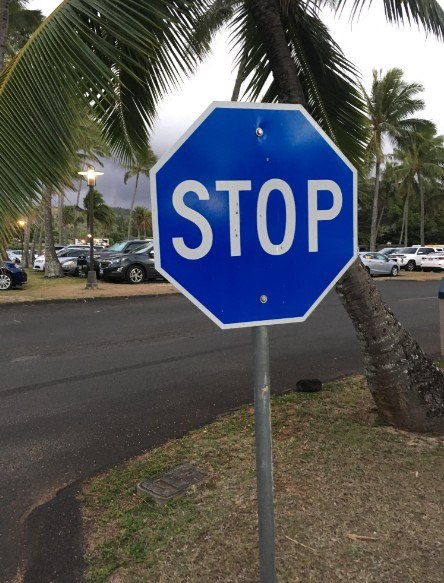
If you’ve ever encountered a blue stop sign and felt a moment of confusion, you’re not alone. The traditional red octagonal stop sign is a staple on American roads, making any deviation from this norm particularly eye-catching. Blue stop signs are indeed real, but they serve specific purposes and are typically found in particular settings.
The Reality of Blue Stop Signs
Yes, blue stop signs exist, but they are not issued or regulated by the U.S. Department of Transportation (DOT). This means you’re unlikely to encounter them on public roadways. Instead, these signs are commonly installed on private properties, such as:
-
Gated residential communities
-
Private university or corporate campuses
-
Expansive parking facilities
-
Amusement parks or privately owned roads
In these environments, property owners have the discretion to implement signage that suits their specific needs, even if these signs don’t adhere to national standards.
The Evolution of Stop Sign Colors
To appreciate the uniqueness of blue stop signs, it’s helpful to understand the history of stop sign colors in the United States.
In the 1910s, stop signs were yellow with black lettering. This color scheme was chosen to attract drivers’ attention without compromising visibility, especially under low-light conditions. However, as traffic volumes increased, the prevalence of yellow in various traffic signs led to potential confusion.
By the 1950s, red was adopted as the standard color for stop signs. Red’s strong association with warnings and danger made it an intuitive choice. This change aligned stop signs with other red warning signals, such as traffic lights and fire alarms, enhancing their effectiveness.
Understanding Traffic Sign Color Codes
Traffic sign colors are not arbitrary; each hue conveys a specific message to drivers:
-
Red: Indicates stop or prohibition
-
Yellow: Serves as a general warning or caution
-
Green: Provides directional guidance or indicates permitted movement
-
Blue: Offers information about services or facilities, such as hospitals or rest areas
-
White and Black: Used for regulatory signs, including speed limits and lane usage
Within this framework, blue stop signs don’t fit the conventional traffic sign system, which is why they are absent from public roads.
Legal Implications of Blue Stop Signs
On public roadways, blue stop signs lack legal enforceability, meaning drivers aren’t legally obligated to obey them, and law enforcement typically won’t issue citations for disregarding them. However, the context changes on private property.
While not legally binding in the same way as red stop signs, blue stop signs on private property serve to manage traffic flow, enhance safety, and prevent accidents. Ignoring them can lead to consequences such as:
-
Violating property rules, potentially resulting in fines or bans
-
Increased liability in the event of an accident
-
Possible enforcement by local authorities if there’s a formal agreement or public safety concern
Therefore, it’s prudent to treat blue stop signs on private property with the same caution as standard red ones.
Reasons Behind Choosing Blue Stop Signs
Property managers may opt for blue stop signs for several reasons:
-
Differentiation: To distinguish private roadways from public ones, signaling that the area operates under its own set of rules.
-
Aesthetic Considerations: Aligning signage with the property’s design theme or color scheme.
-
Availability and Cost: Blue stop signs are readily available through various retailers and may be chosen for their affordability.
Conclusion
While blue stop signs are unconventional and not part of the official traffic sign repertoire, they are commonly used on private properties to regulate traffic and ensure safety. Recognizing their purpose and responding appropriately can help maintain order and prevent accidents in these private settings.





